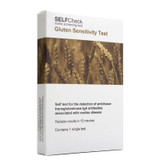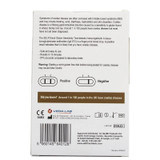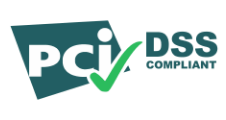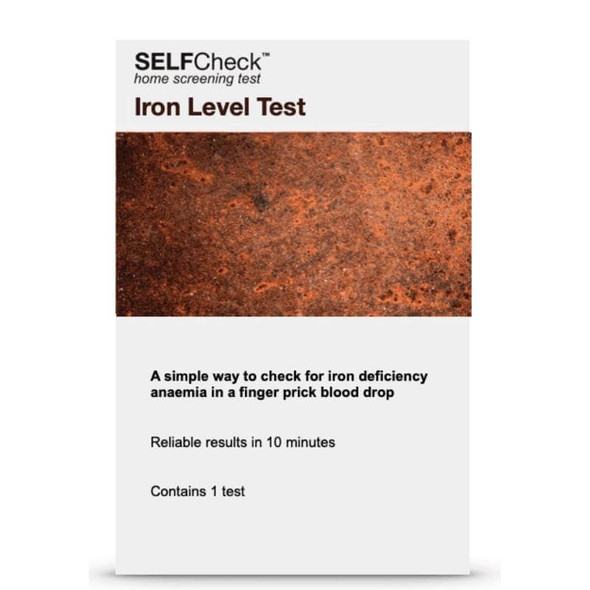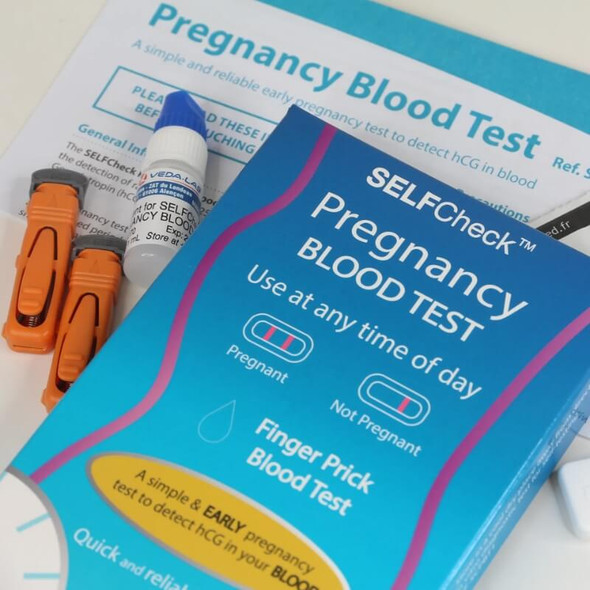The SELFCheck test provides an early detection of potential gluten intolerance. Gluten intolerance can have debilitating influence on life, and early indication allows you take further steps toward possible diagnosis coeliac disease.
Features
• Simple, easy to follow instructions.
• No requirement to limit food or fluid intake prior to testing.
• Home testing - no need to send off for results.
• The test can be carried out at any time.
• The test provides a visible result within 10 minutes.
What are the benefits of testing for gluten intolerance?
Gluten intolerance is a lifelong genetically inherited intestinal disorder, where the inner surface of the small intestine is damaged through eating food containing gluten.
Gluten intolerance can present a range of symptoms, including:
- Mild weakness
- Mouth ulcers
- Chronic diarrhoea
- Abdominal bloating
- Weight loss
These symptoms may vary in intensity and therefore contribute to an overall deterioration to an individual's wellbeing.
Who can use this test?
Everyone who experiences unexplained digestive problems or thinks they may be gluten intolerant
How to use the test
- The test requires a small drop of blood.
- Visual results will be available within 10 minutes.
- Read the full instruction leaflet contained in the pack before use.
How to read my results
- If 2 lines appear on the strip, 1 on the T line and 1 on the C line there is a positive! Result and are gluten intolerant.
- If 1 line appears on the test strip on the C line then there is a negative! Result and do not appear to be gluten intolerant.
- If no lines appear on the test strip or 1 line appears on the T line then the test is invalid and needs to be repeated with a new test kit.
What are the next steps I can take if the result is positive?
If you test positive for gluten intolerance you should contact your doctor for further tests and diagnosis. You should not avoid eating food containing gluten (such as products made from wheat, rye or barley) in the meantime, as lowering gluten intake reduces antibodies and make diagnosis difficult.
Pack contains: Each pack contains 1 test strip, 1 lancet, 1 alcohol swab, sample buffer solution, 1 tube with glass capillary, and 1 instruction leaflet.
Featured Review
"Worked perfectly, was easy to use, fast delivery" - Molly ⭐⭐⭐⭐⭐
Frequently Asked Questions
What is the SELFCheck Coeliac (Gluten Intolerance) Test?
The SELFCheck Coeliac (Gluten Intolerance) Test is a home testing kit designed to detect the presence of Immunoglobulin A tissue transglutaminase antibodies (IgA tTG) in a small blood sample. These antibodies are commonly associated with coeliac disease, a condition where the immune system reacts to gluten, leading to damage in the small intestine. The test provides results within 10 minutes, allowing individuals to assess their potential gluten intolerance conveniently at home.
How accurate is the SELFCheck Coeliac Test?
The SELFCheck Coeliac Test has demonstrated a reliability rate of over 97% compared to laboratory tests. Clinical studies have shown that the test is as reliable as those conducted in medical settings, making it a dependable option for preliminary screening of coeliac disease.
Who should consider using this test?
Individuals experiencing unexplained digestive issues such as bloating, chronic diarrhoea, abdominal discomfort, or those who suspect they may have gluten intolerance should consider using the SELFCheck Coeliac Test. Additionally, those with a family history of coeliac disease or related autoimmune conditions may find this test beneficial for early detection.
How should I prepare before taking the test?
To ensure accurate results, it's important to be on a normal gluten-containing diet before taking the test. Avoiding gluten prior to testing can lead to false-negative results, as the production of antibodies decreases when gluten is eliminated from the diet. Therefore, continue consuming gluten-containing foods leading up to the test.
What steps should I follow to perform the test correctly?
- Wash and dry your hands thoroughly.
- Use the provided lancet to obtain a small blood sample from your fingertip.
- Collect the blood using the supplied pipette.
- Transfer the blood into the buffer solution vial and mix well.
- Apply the mixture to the test cassette as instructed.
- Wait for 10 minutes before reading the results.
Detailed instructions are included in the test kit to guide you through each step.
How do I interpret the test results?
- Positive Result: Two lines appear—one on the 'T' (test) line and one on the 'C' (control) line—indicating the presence of IgA tTG antibodies, suggesting a likelihood of coeliac disease.
- Negative Result: Only one line appears on the 'C' line, indicating no detectable IgA tTG antibodies.
- Invalid Result: No lines or only a line on the 'T' line appear, suggesting the test did not function properly and should be repeated with a new kit.
What should I do if I receive a positive result?
If the test result is positive, it's important to consult your doctor for further evaluation and confirmatory testing. Do not start a gluten-free diet before obtaining a medical diagnosis, as this can interfere with subsequent tests and potentially lead to inaccurate results.
Are there any limitations or considerations I should be aware of?
- Age Restriction: The test is not suitable for children under 6 years old.
- Dietary Requirements: A normal gluten-containing diet is necessary for accurate results.
- IgA Deficiency: Individuals with selective IgA deficiency may receive false-negative results, as the test detects IgA antibodies.
- Symptom Variability: Symptoms of coeliac disease can overlap with other conditions; therefore, a positive test should be followed by professional medical advice.


